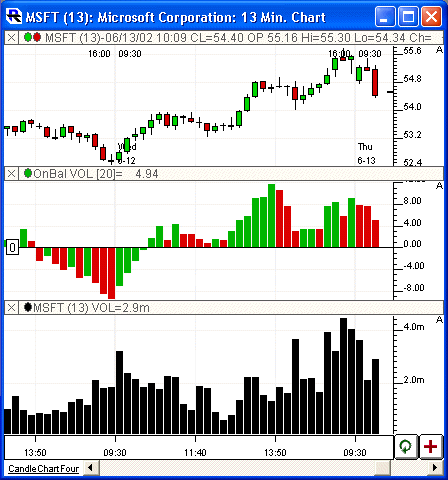The On Balance Volume (OBV) for an n-day period is defined as the sum of all volumes for up days minus all volumes for down days. An up day is one where the price closed higher or the same as the previous day. The On Balance Volume study calculates the n-day OBV for each day and charts it as a line or histogram which can oscillate around the zero line.
A "Cumulative" option forces the OBV to consider all previous data when calculating, as opposed to only the previous period. The OBV values accumulate throughout the chart. If the "Cumulative" option is unchecked, the user may specify a period over which the OBV will be calculated.
A "Normalized" checkbox option is available which results is an oscillator that ranges between extreme values of -100 and +100. The OBV is normalized by first dividing the result by the total volume, and then multiplying by 100. When "Cumulative" is checked, the total volume is the sum of the volume of all previous bars. When "Cumulative" is unchecked, the total volume is the sum of the volume of the bars in the previous period. A normalized result of +100 would mean that each bar over the period was an up bar, and therefore all volume was considered up volume. Similarly, a value of -100 would mean that each bar over the period was an down bar, and therefore all volume was considered down volume. A value of 0 would represent an even mixture of up volume and down volume over the period.
Presentation

Above is a 15 Minute Bar Chart of a Intel Corporation (INTC). The histogram in the middle window pane is the On Balance Volume.


